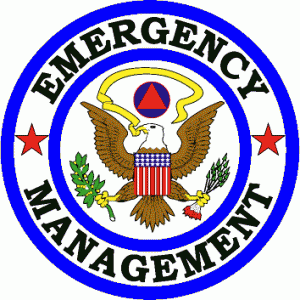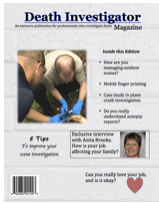 In the United States (US), Medical Examiners and Coroners (ME/Cs) have the legal authority for the management of mass fatality incidents (MFI). Yet, preparedness and operational capabilities in this sector remain largely unknown Both large-scale fatality disasters, as well as smaller scale incidents with multiple fatalities are referred to as “mass fatality incidents” (MFI). Generally, we use the term MFI to describe situations in which the resultant number of deaths exceeds the local jurisdiction’s ability to respond effectively. More recently, another term, referred to as “Complex Fatality Management” (CFM), is being used in recognition of the fact that local capacity can be overwhelmed by even a single fatality if the incident involves hazardous chemical, biological, radiological, nuclear or explosive (CBRNE) agents.
In the United States (US), Medical Examiners and Coroners (ME/Cs) have the legal authority for the management of mass fatality incidents (MFI). Yet, preparedness and operational capabilities in this sector remain largely unknown Both large-scale fatality disasters, as well as smaller scale incidents with multiple fatalities are referred to as “mass fatality incidents” (MFI). Generally, we use the term MFI to describe situations in which the resultant number of deaths exceeds the local jurisdiction’s ability to respond effectively. More recently, another term, referred to as “Complex Fatality Management” (CFM), is being used in recognition of the fact that local capacity can be overwhelmed by even a single fatality if the incident involves hazardous chemical, biological, radiological, nuclear or explosive (CBRNE) agents.
Coroner Authority
In the US, the medicolegal authority for decedents is typically under the authority of Medical Examiners or Coroners (ME/Cs). In most jurisdictions (usually county-level), ME/Cs are responsible for the investigation and management of deaths resulting from homicide, suicide, and accidents as well as deaths resulting from incidents that may present a threat to public health. Offices of ME/C, spread across over 1000 jurisdictions in the US, can range from very small offices, essentially manned by one-person, to much larger and robust offices, with more than one hundred employees . Guidance on MFI management is generally provided in a state’s mass fatality response plan, which many states have, usually as an annex to the state’s disaster plan . The local ME/C may also have office-specific MFI plans. Although having a written plan is an important first step, ME/Cs must also have adequate operational capabilities to execute the plan. Pre-existing relationships with response partners, including governmental agencies, local businesses, and voluntary organizations, can be vital to ensuring ME/Cs offices’ response capacity. These partners may supply additional staff, space, supplies, or other forms of support.
Coroner Responsibility
In response to MFI, the ME/C must execute or oversee an array of operational tasks. Some of these include: securing and preserving human remains at a disaster site; recovering human remains; developing and implementing public communication messages; credentialing and managing volunteer staff; mobilizing missing persons call centers; performing all morgue operations, including ante-mortem and postmortem data collection for victim identification (Victim Identification Program); transporting, storing and securing temporary interment of remains; and releasing human remains for final disposition .
Furthermore, if CBRNE agents have contaminated the scene and/or human remains, then the ME/C must also take special precautions to ensure the safety of their staff and community. ME/Cs must also consider the impact of their investigative actions with respect to religious rituals or faith traditions. ME/Cs should also be cognizant of and make preparations for reducing adverse mental health impacts of the MFI response on staff and volunteers.

Episode Guest
 Kevin Tweedy EMT-P, CCEMTP
Kevin Tweedy EMT-P, CCEMTP
Interim Commander
Missouri Disaster Response System (MoDRS)
235 Coon Creek Parkway
Hollister, Missouri 65672
Corperate Office address:
Missouri Disaster Response System, Inc.
8250 NE Underground Dr., Ste. 132C
Kansas City, MO 64161

 Get your subscription today.
Get your subscription today.
Click on image for more information

